MakersPlace is one of several marketplaces for rare digital art. Creators on the platform sell digital art via Ethereum Non-Fungible Token contracts, which essentially say that the art was made by the creator and is owned by the owner.
My role was to develop a controlled vocabulary for digital art. How should we categorize art? How do site visitors want to browse art? How do creators want to tag art? Furthermore, with a quality vocabulary for art, it should be easier to observe market trends, classify creators and collectors, and increase transaction volume. There are no known right answers, so we had a green field. Various platforms for other media have pursued various solutions, e.g. SoundCloud, Pandora, Medium, and Saatchi Art.
This case study covers the development of a taxonomy, from comparative research to combing the existing data to data entry and validation.
One of my first hunches was to check out data from DeviantArt, a site with millions of categorized works of digital art that's been running since 2000. I came across a relevant paper from Hanley Weng who had also been associated with the Software Studies Initiative at UC San Diego around the same time I did my PhD. After some data science in Python, I had the numbers I wanted. What percent of all submissions per year fall into each of the site's subcategories? How did this change per year? Which categories declined, thrived, or never had any traction at all?
Very early on, I proposed a set of four criteria that proved helpful over and over again. The hardest one of these is probably "brightline," because the person labeling art has to be able to consistently determine what pieces count in a category(e.g. "calm") or not.
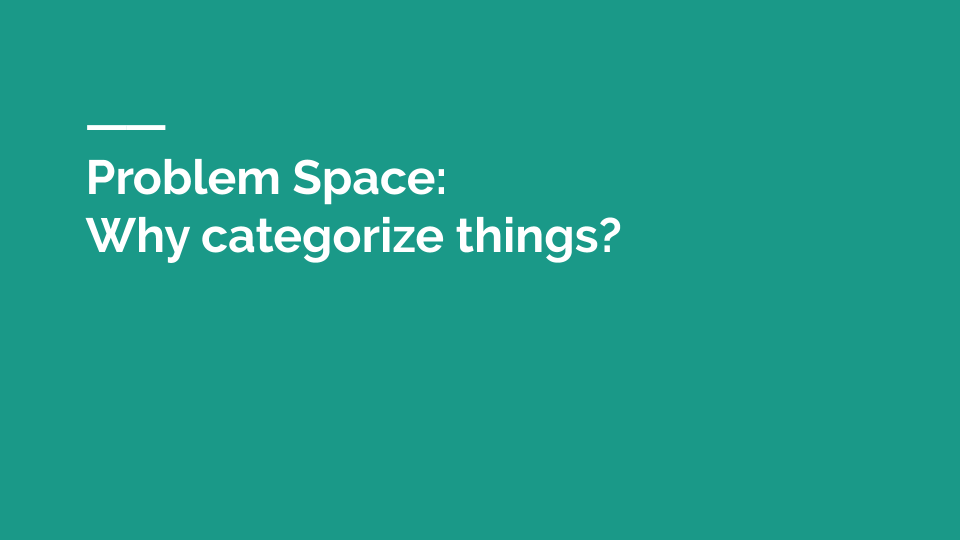
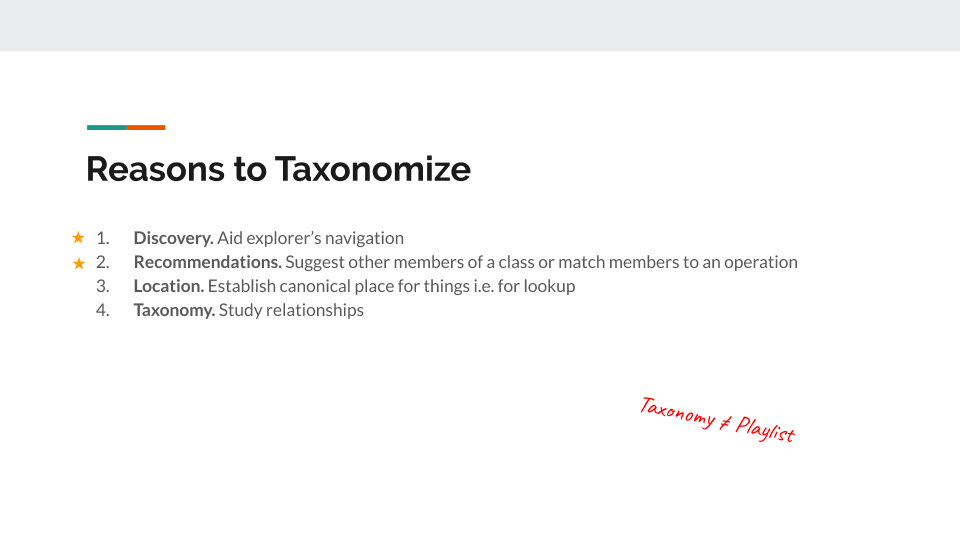
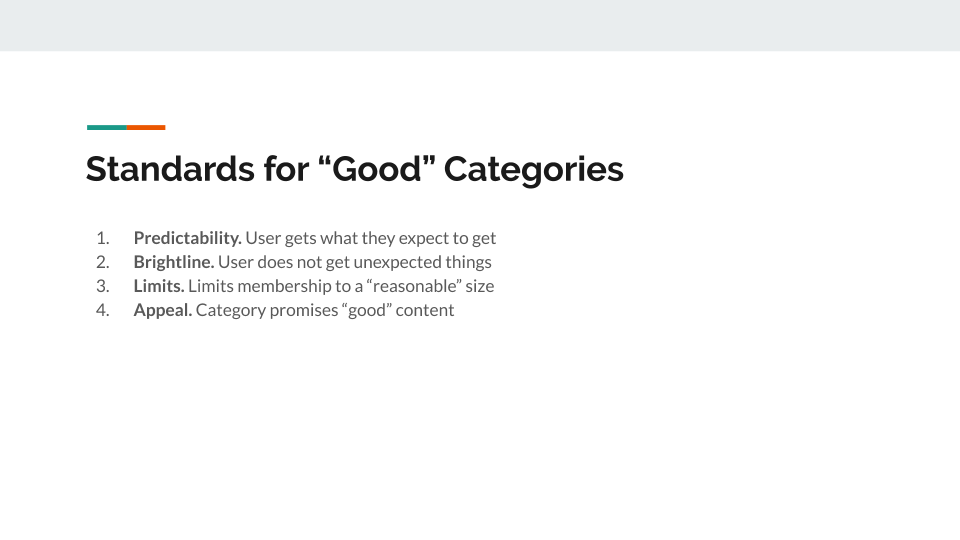
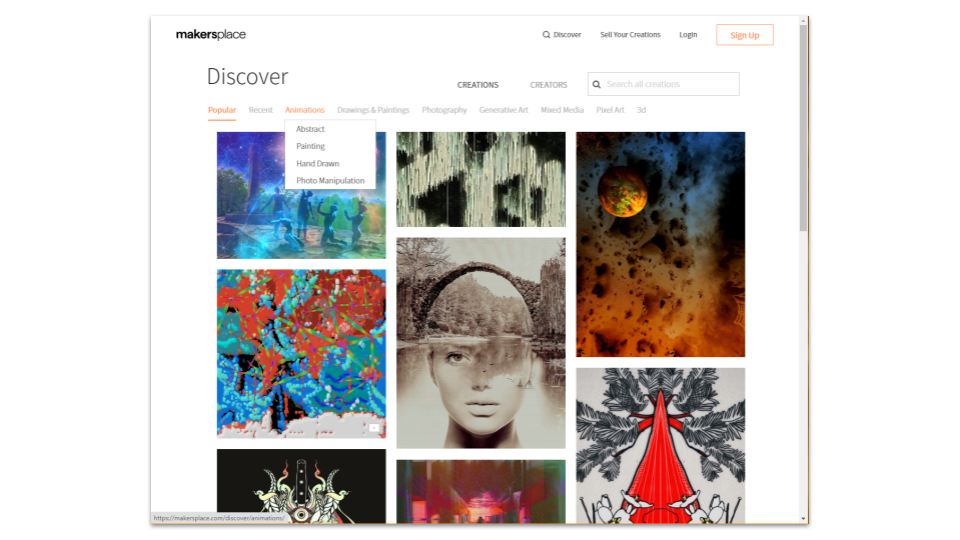
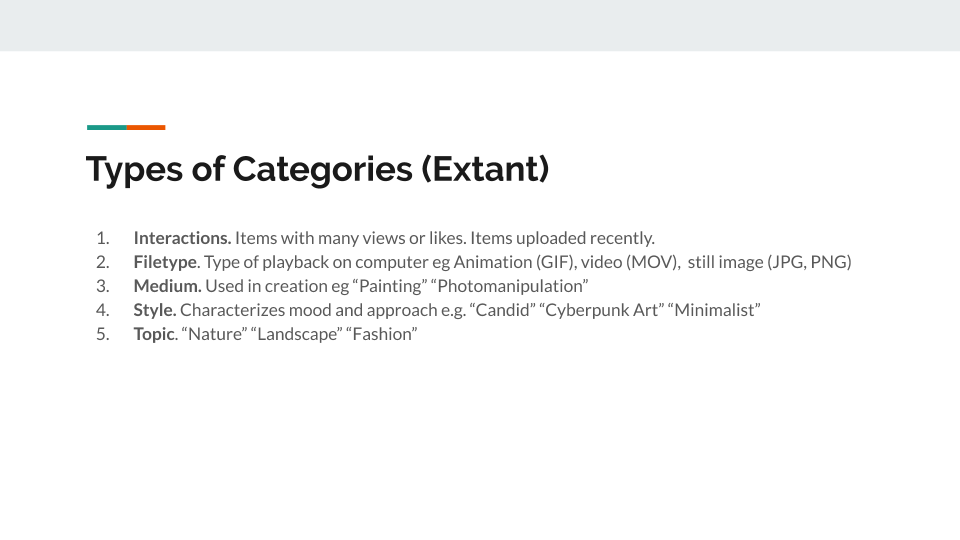
Here I wrote some scripts to grab a few hundred products, get their tags in one list, get the creator name, and slap it all together into single slides. This let me peruse hundreds of examples of what we already had: freeform tags added by creators on upload. What did our creators think their work was about? What were their instincts? Which tags make sense across many pieces? Which did not?
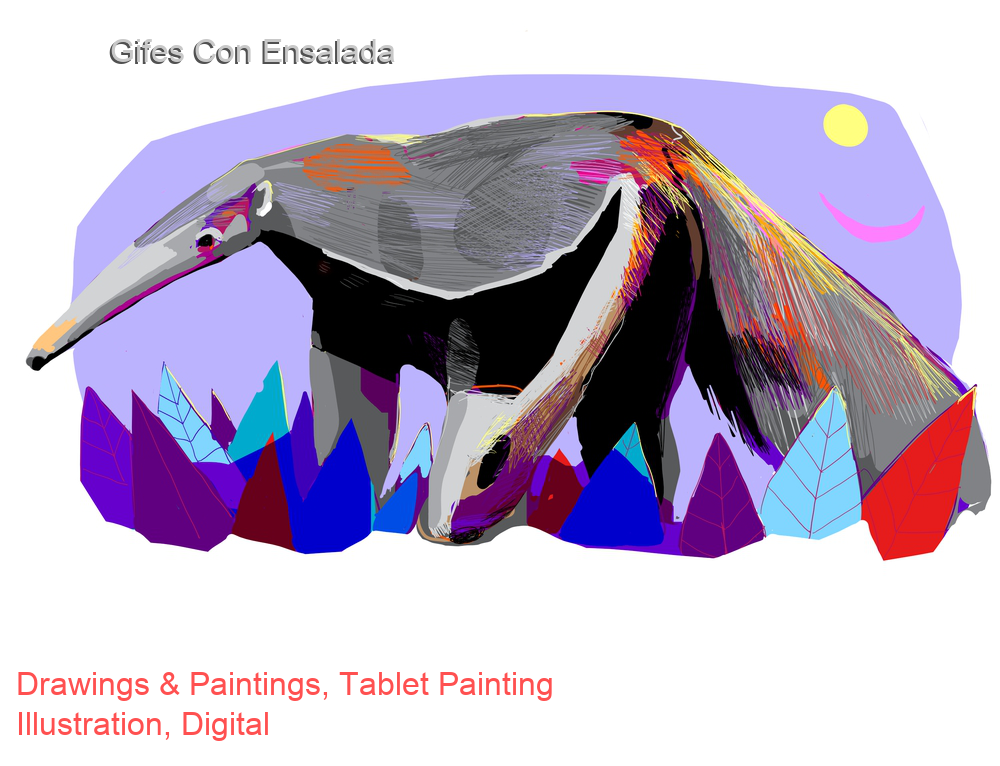
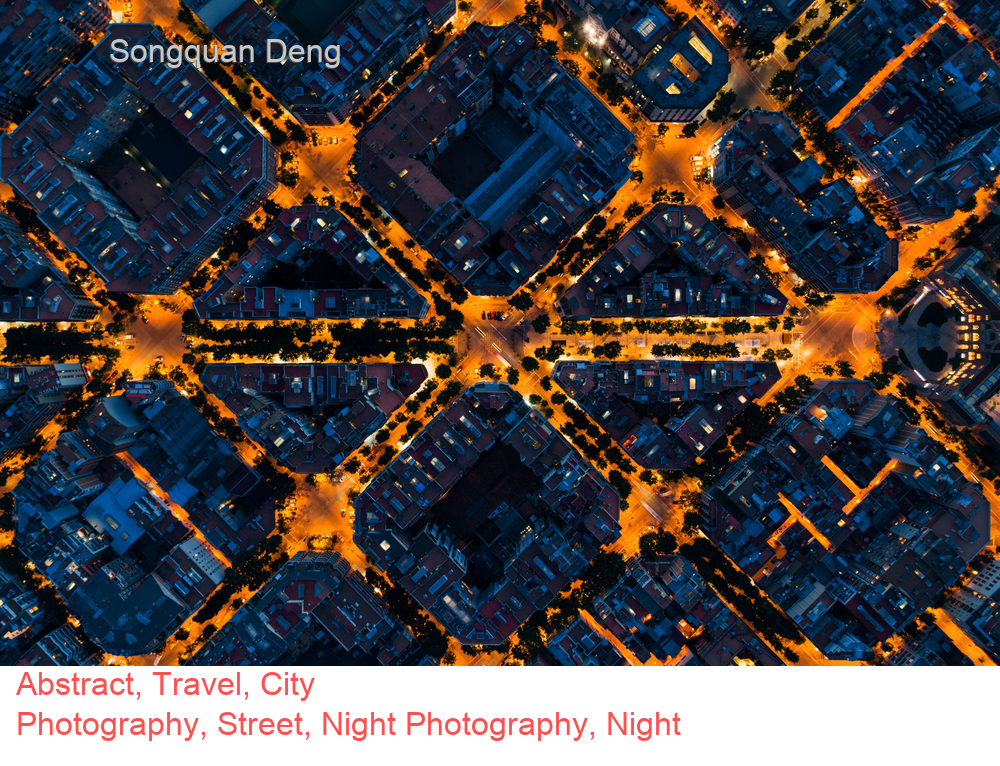
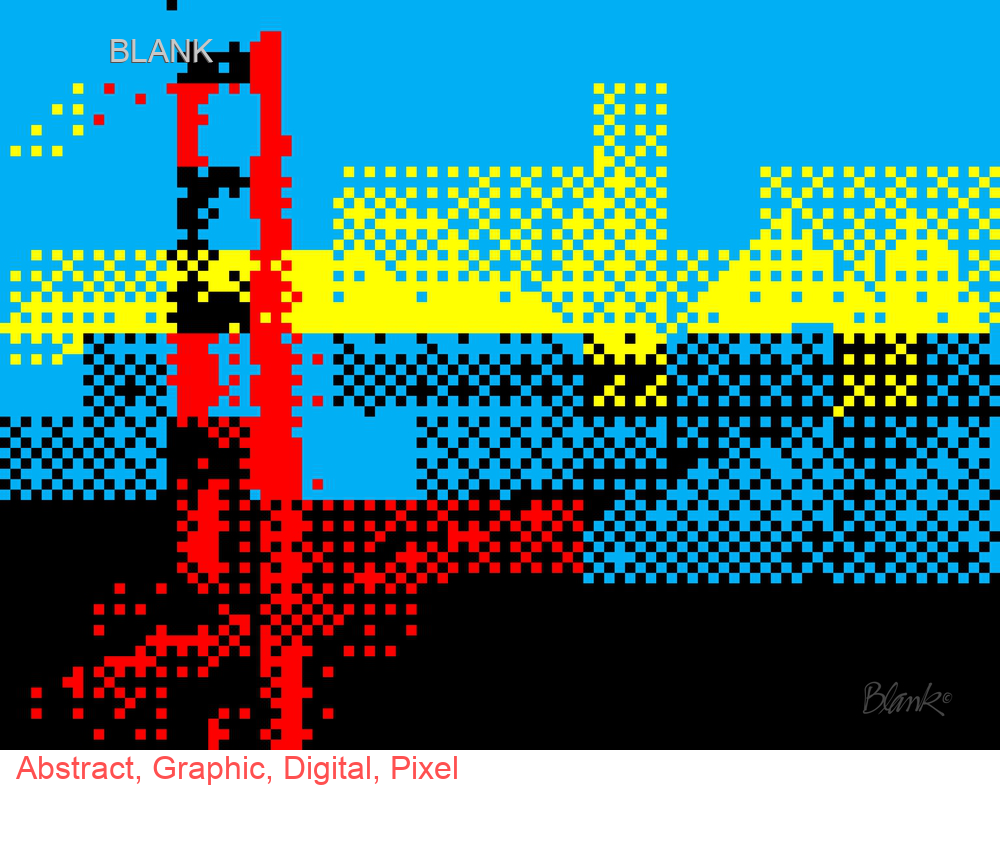
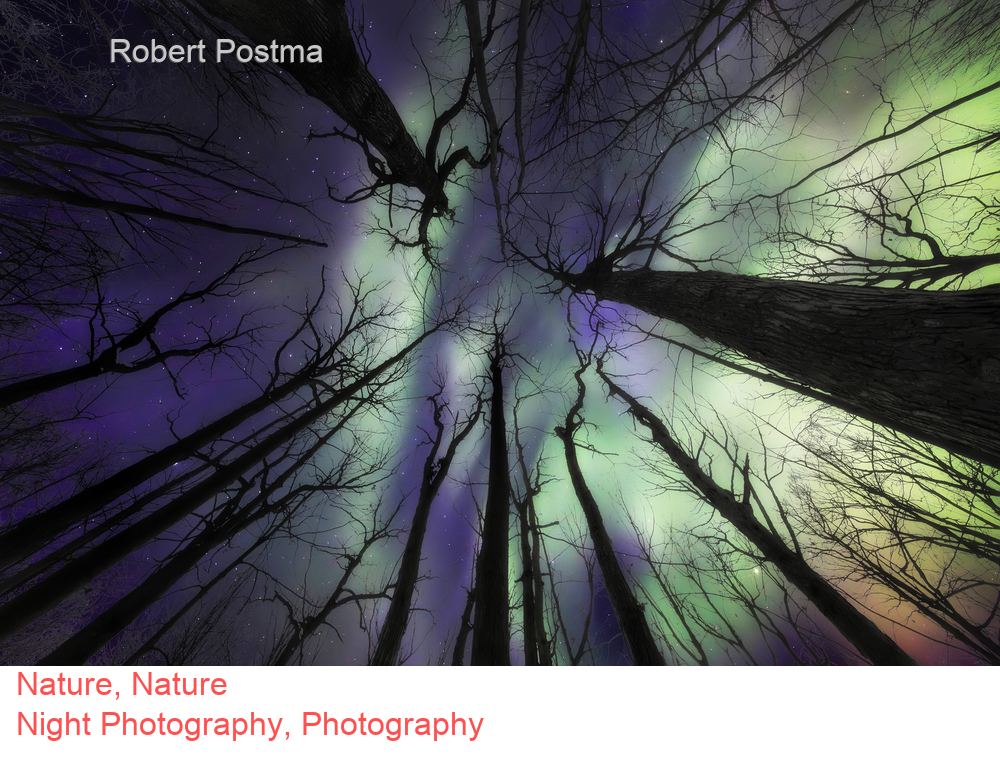
This labeling app let me label hundreds of images more efficiently and without error. I wrote the app in Python, after reviewing similar image labeling products, and so was able to adapt as the labeling scheme continued to grow and change.
Labels look like this.
- Subject Matter: Nature, Light as Subject, Waterscapes
- Techniques: 3D Model
- Moods: Hope, Calm
- Visuals: Dotted, Glowing, Sparse
To validate the taxonomy, I asked participants to pick labels, then showed them art with those labels. I wrote this tool up in Python and tested in the office a couple times as well as with potential customers at a local art event.
We iterated and improved, but certain issues were beyond our scope to resolve. For example, we believe that these images are all glitchy and about cryptocurrency. However, seeing them for the first time, you might no see it. In fact, the first shows the creator of Ethereum, the second is a line chart of Bitcoin price, and the third an homage to economic decentralization! The accurate and obvious are in conflict and we decided to pick accuracy for now.




